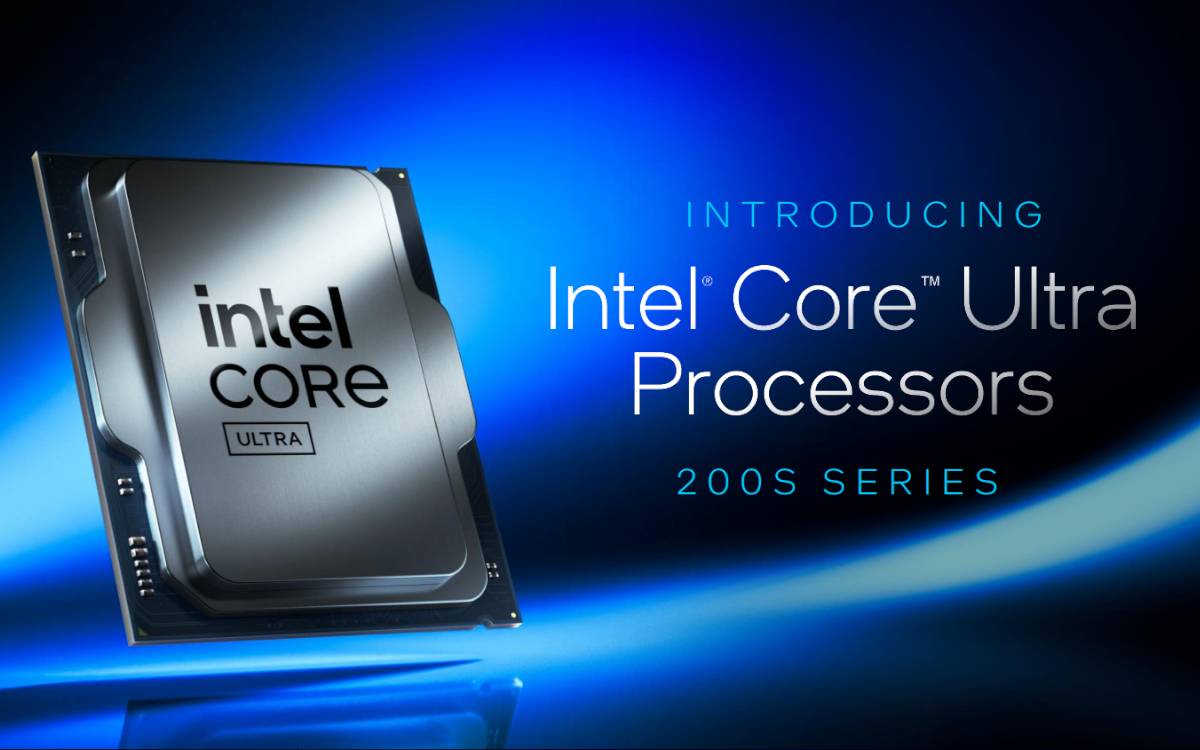
The processors Intel Core Ultra 200 seriescodename Arrow Lake-Sgo on pre-sale from October 24th. In addition to the start of sales, Intel confirmed the models and prices of its new generation of products, in addition to anticipating expected performance and improvements for these CPUs.
The Arrow Lake-S generation arrives with a clear mission: to increase the efficiency of Intel processors. While its top-of-the-line 14th generation models fight on balance with AMD Ryzen in performance, when it comes to efficiency, the red side of the force has a clear advantage.
To face its rival, Intel is betting on changes in the structures of its processors, and even abandoning technologies used decades ago, such as Hype-threading.
The new generation will be able to deliver a reduction in consumption exceeding 50% compared to the 14th generation, but still with gains of more than 10% in multi-thread (despite having lost the hype-thread).
Less consumption of two Intel Core Ultra 200
Intel’s focus in this generation was to increase the efficiency of its products, and according to its graphics, it achieved this goal. The company claims that it managed to reduce processor consumption in light activities by almost half. At high load, it claims to be able to deliver 15% more multithreaded performance than the previous generation, and is 13% faster than the equivalent AMD Ryzen CPU.

This is evident in the performance and consumption curve of the Core Ultra 9 285K, the company’s new top of the line, compared to the Core i9-14900K and the Ryzen 9 9950X. At 125W, the new CPU achieves a similar level of performance to the 14900K at a consumption of 250W, and is also represented as having a slight advantage over rival AMD Ryzen.

Considering the consumption of the system as a whole, the 285K can maintain performance at a similar level while consuming from 34W to up to 165W less energy. On average, the system with the new Core Ultra 9 consumes 73W less than a similar system with a Core i9-14900K.


Intel Core Ultra 200 runs cooler
Consumption goes hand in hand with heating, and the increase in energy efficiency also had an impact on temperatures. According to Intel, the 285K runs up to 17ºC cooler than its predecessor, with an average of 13ºC cooler than a Core i9-14900K.

Performance
But there are not only advances in the Arrow Lake-S, and performance will be a controversial topic. Recently, AMD didn’t raise many smiles when it launched the Ryzen 9000 line with efficiency improvements but non-existent performance gains, and Intel is following a similar process with its new products.

A large reduction in consumption was achieved, but this had a negative effect on performance in some scenarios. In professional applications and with the use of multithreads, there were gains, although modest, but in games the average is a decline of 5% compared to what the generation delivers.
In a gaming comparison, compared to its rivals, the company has an even fight with the Ryzen 9 9950X, but is at a disadvantage against AMD processors with 3D V-cache, such as the Ryzen 9 7950X3D.


Products, prices and availability
The Intel Core Ultra 200 series will begin pre-sales on October 24th. The line-up is built in a very similar way to what we saw in Raptor Lake, with the Core Ultra 9 bringing 24 cores, 8 for performance and 16 for efficiency, the Core Ultra 7 bringing 20 cores, with 8 for performance and 12 of efficiency, and the Core Ultra 5 bringing 14 cores, with 6 for performance and 8 for efficiency.

The specification that has changed is the number of threads. Without Hyper-threading on the performance cores, the Core Ultra 9 reduces from 32 to 24 threads, the Core Ultra 7 from 28 to 20, and the Core Ultra 5 goes from 20 to 14.
As we will discuss further in an article about the microarchitecture, Intel removed the multiple threads per core technology (SMT, or Simultaneous multithreading) as it was able to achieve more performance per thread by disabling this feature. The gain per thread was enough to compensate for the smaller number of threads, as the company states in its performance slides.

Prices are close to those charged on 14th generation Intel Core, with slightly cheaper prices on some models. Versus rivals AMD Ryzen, the comparison depends on the segment. The Core Ultra 9 and Ultra 5 cost less than the launch price of rivals the Ryzen 9 and 5, while the Core Ultra 7 is more expensive than the Ryzen 7 but has an advantage in core and thread count.
From October 24th it will be possible to buy the processors in boxes, for those who are going to assemble their own machine, and also in computers assembled by integrators. The new line of processors comes with a new socket, the LGA-1851, and a new line of chipsets, the Intel 800 series.
Source: https://www.adrenaline.com.br/intel/intel-core-ultra-200-metade-do-consumo-mas-menos-performance-em-games-veja-os-precos/


